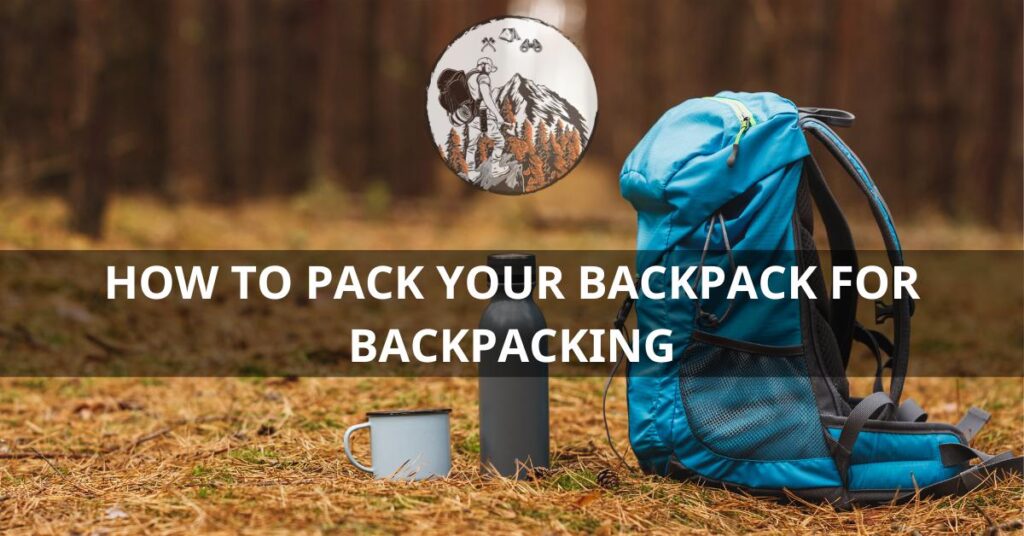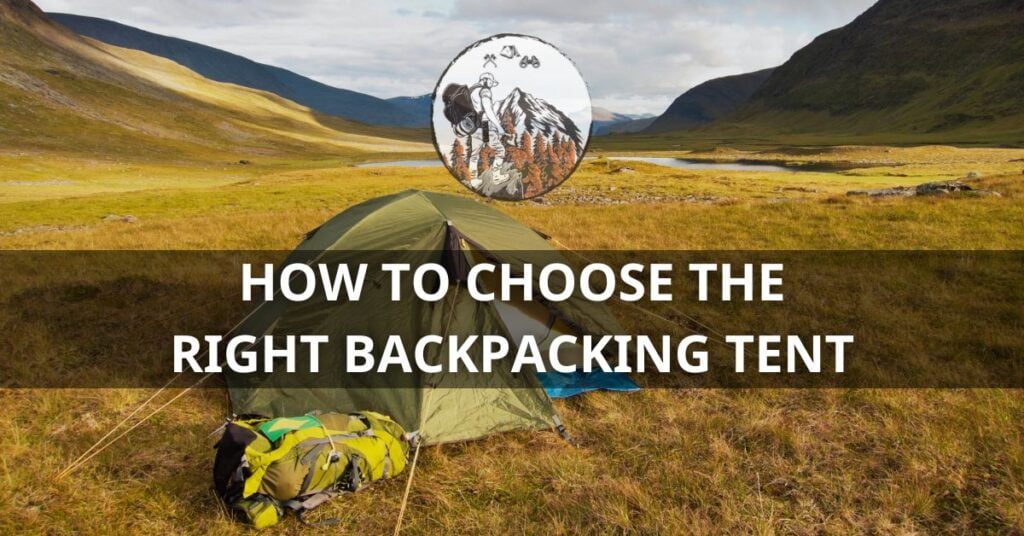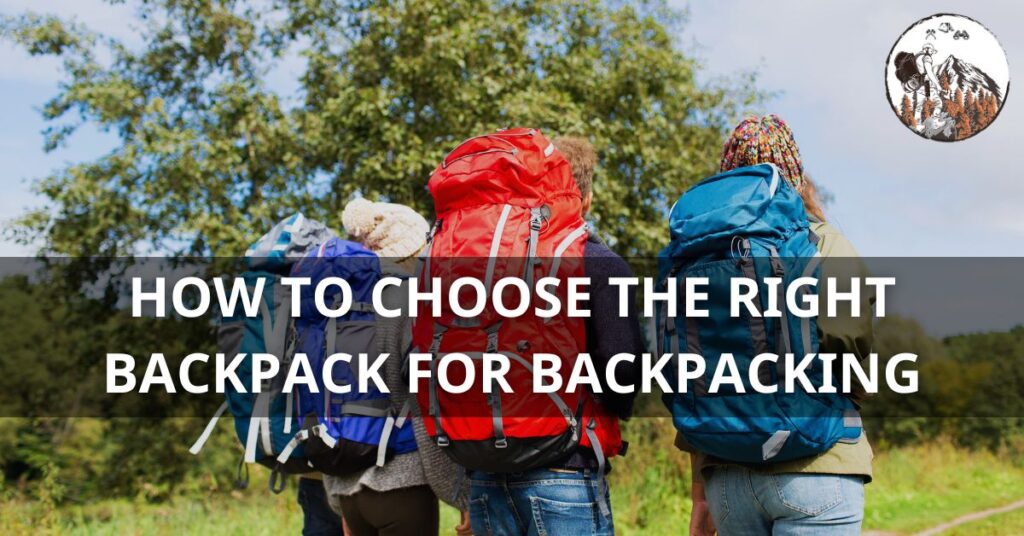Embarking on a backpacking adventure is an exhilarating experience. It offers the freedom to explore breathtaking landscapes, immerse yourself in nature, and create lasting memories. However, to ensure a successful and enjoyable backpacking, knowing how to pack your backpack for backpacking is essential.
In this comprehensive guide, we’ll walk you through the process of packing your backpack like a pro, from selecting the right gear to organizing your essentials efficiently. Whether you’re a backpacking beginner or an experienced adventurer, these tips will help you pack smarter, lighter, and more comfortably for your next journey into the great outdoors.
Table of Contents

Selecting the Right Backpack
Before you start packing, it’s crucial to choose the right backpack for your adventure. Consider factors such as the duration of your trip, the type of terrain you’ll encounter, and your personal preferences. Here are a few key points to keep in mind:
Size & Capacity
The size and capacity of your backpack will depend on the length of your trip, the type of activities you’ll be doing, and your personal preferences. Here are some common pack sizes and their recommended uses:
- Daypack (20-35L): Ideal for day trips, short hikes, or city explorations.
- Weekend Pack (40-50L): Suitable for 2-3 day trips or minimalist packing for longer trips.
- Multiday Pack (60-80L): Recommended for week-long adventures or long-distance hiking with overnight stays.
Fit & Comfort
A proper backpack fit is crucial for comfortable and efficient packing. Look for a pack with adjustable shoulder straps, a padded hip belt, and a back panel designed to fit your body type.
Features & Organization
Consider external features like pockets, straps, loops, and compartments when choosing your backpack. These will come in handy for organizing your gear efficiently and accessing it easily on the trail. Rain cover is a must for your backpack.

Essential Gear and Clothing
When it comes to packing gear and clothing, it’s crucial to strike a balance between being prepared and keeping your backpack lightweight. Here are some essential items to consider:
Shelter
A lightweight tent or hammock, depending on your preference and the conditions you’ll encounter.
Sleeping System
A sleeping bag and sleeping pad to ensure a comfortable night’s rest.
Cooking equipment
Opt for a lightweight stove, durable cookware, and utensils, and pack energy-rich meals and snacks.
Clothing
Pack versatile clothing suitable for various weather conditions, including moisture-wicking base layers, insulating mid-layers, and a waterproof outer shell.
Footwear
Invest in comfortable and sturdy hiking boots or trail shoes that are broken in to avoid blisters and discomfort.
Personal Essentials
Include items like a first aid kit, toiletries, sunscreen, insect repellent, and a multi-tool.
Choose lightweight and compact options suitable for your specific needs and the expected weather conditions.
Organizing Your Backpack
Efficiently organizing your backpack not only enhances weight distribution but also allows for easy access to essential items. Here are some tips for strategic packing:
- Heaviest items at the bottom: Place heavy gear close to your back and near the bottom of your backpack to maintain balance and stability.
- Frequently used items within reach: Pack items you’ll need throughout the day, such as snacks, a water bottle, and a rain jacket, in easily accessible pockets.
- Compression sacks and packing cubes: Utilize compression sacks and packing cubes to maximize space and keep your gear organized.
- Keep essentials handy: Store important items like a map, compass, and headlamp in the backpack’s lid or outer pockets for quick access.
Food and Water Essentials
Proper nutrition and hydration are vital for a successful backpacking trip. Here are some tips for packing and managing food and water:
- Meal planning: Plan your meals and pack lightweight, calorie-dense foods that require minimal cooking and cleanup.
- Water filtration systems: Carry a reliable water filter or purifier to ensure a safe and continuous supply of drinking water from natural sources.
- Hydration bladder or water bottles: Use a hydration bladder or lightweight water bottle to carry an adequate amount of water during your hike.
- Snacks: Pack energy-rich snacks like trail mix, energy bars, and dried fruits to keep you fueled throughout the day.
Safety Precautions
When venturing into the outdoors, safety should always be a top priority. Consider the following safety precautions:
- First aid kit: Pack a well-stocked first aid kit that includes essentials like bandages, pain relievers, blister treatment, and any necessary personal medications.
- Navigation tools: Carry a map, compass, or GPS device, and ensure you have the necessary skills to navigate effectively in your chosen hiking area.
- Emergency communication: Bring a fully charged mobile phone or a satellite communication device in emergencies.
Advanced Packing Techniques
Once you’ve mastered the basics of backpack packing, consider these advanced techniques to further optimize your space and organization:
- Utilize compression sacks: Compress your clothing, sleeping bag, and other soft items using compression sacks to maximize space and reduce bulk.
- Strategic folding: Fold clothes and pack them tightly to minimize wrinkles and create more space.
- Rolling technique: Roll clothing items like t-shirts, socks, and underwear to save space and prevent creasing.
Seasonal Considerations
Keep in mind the specific challenges and gear requirements that each season brings. Tailor your packing list accordingly:
- Winter: Pack additional layers, insulation, and gear suitable for snow and freezing temperatures.
- Spring and Fall: Be prepared for variable weather conditions, including rain and temperature fluctuations.
- Summer: Prioritize lightweight and breathable clothing, sun protection, and ample hydration.

Tips for Comfortable Hiking
Comfortable hiking goes beyond just packing efficiently. Consider these tips to enhance your overall hiking experience:
- Properly adjust backpack straps: Ensure your backpack straps are properly adjusted to distribute weight evenly and prevent strain on your shoulders and back.
- Choose the right footwear: Invest in high-quality hiking boots or trail shoes that provide comfort, ankle support, and traction suitable for the terrain.
Personalizing Your Packing List
Make your backpacking experience even more enjoyable by adding personal touches to your gear:
- Comfort items: Pack small items that bring you comfort, such as a favorite book, a lightweight camp chair, or a travel pillow.
- Memorable items: Carry mementos or personal tokens that hold sentimental value and remind you of loved ones while away from home.
The Art of Minimalism
Embrace the art of minimalism to lighten your load and simplify your backpacking experience:
- Review your gear: Regularly assess your gear and remove items that are unnecessary or rarely used.
- Multi-purpose items: Choose gear and clothing that serve multiple functions to reduce weight and bulk.
Overcoming Challenges
While backpacking, challenges are inevitable. Here are some common issues backpackers face and ways to overcome them:
- Blisters: Take preventive measures like wearing appropriate footwear, using moleskin on hotspots, and keeping your feet clean and dry.
- Inclement weather: Be prepared for changing weather conditions by carrying appropriate rain gear, extra layers, and a waterproof backpack cover.
- Physical fatigue: Train your body and gradually increase your hiking distance and load to build endurance.
Backpack Maintenance
Taking care of your backpack ensures its longevity and reliability throughout your adventures. Here are some maintenance tips:
- Clean and dry: Regularly clean your backpack, following the manufacturer’s instructions, and make sure it’s completely dry before storing.
- Inspect and repair: Check your backpack for any signs of wear and tear. Repair or replace damaged straps, buckles, or zippers promptly.
Conclusion
Efficiently packing your backpack is not just about fitting everything inside; it’s about creating a comfortable and organized experience. By following these packing tips, you’ll be well-prepared, organized, and ready to enjoy the wonders of the great outdoors fully.
Remember, practice makes perfect, and with each trip, you’ll refine your packing skills and discover what works best for you. So, pack your backpack, hit the trail, and get ready for an adventure of a lifetime!
Thank you for reading our tips and guides. Please feel free to share them with your friends if they help!
Frequently Asked Questions (FAQs)
Q: How heavy should my backpack be?
Aim for a backpack weight around 20% of your body weight, but prioritize comfort and avoid overpacking to prevent strain during your trek.
Q: What is the best way to save space in my backpack?
To maximize space, roll your clothes to reduce bulk, use compression sacks for items like sleeping bags, and invest in compact, lightweight gear for efficient packing.
Q: How do I choose the right size backpack for my trip?
Select a backpack size based on the duration of your trip and the specific gear requirements. Find a balance between having enough space and avoiding unnecessary weight.
Q: What safety precautions should I take while backpacking?
Enhance safety by informing someone of your itinerary, carrying a well-stocked first aid kit, familiarizing yourself with the terrain, and staying weather-aware to adapt as needed.
Q: Can you provide tips for efficiently organizing my backpack to enhance weight distribution and accessibility?
Place the heaviest items at the bottom, keep frequently used items within reach, and utilize compression sacks and packing cubes to maximize space. Store essentials like a map and snacks in easily accessible pockets.
Q: How do I choose the right backpack size and capacity for my upcoming backpacking trip?
To choose the right backpack size, consider factors such as the trip duration, activities planned, and personal preferences. Daypacks (20-35L) are ideal for day trips, while weekend packs (40-50L) suit 2-3 day trips. For week-long adventures, opt for a multiday pack (60-80L).



